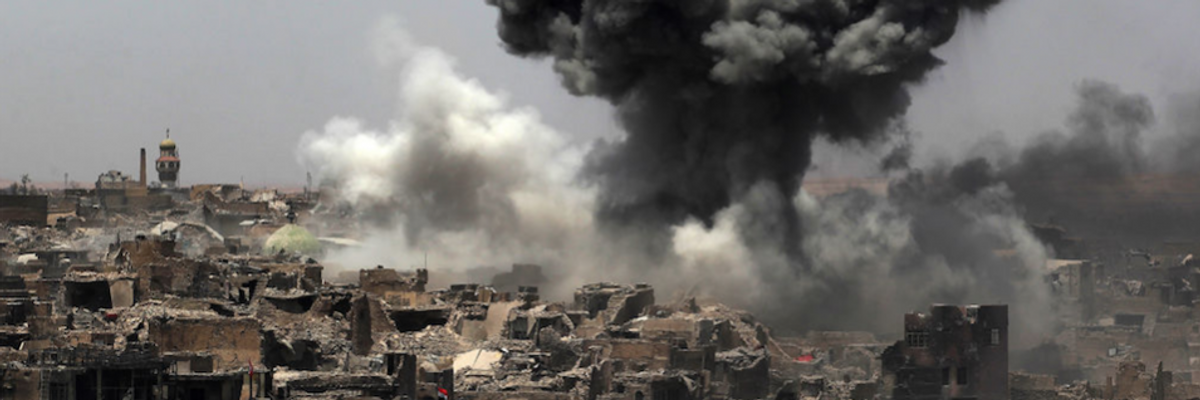A new report published Thursday details United States so-called "counterterrorism" operations by the U.S. military in 85 nations since 2018 as part of its "Global War on Terror," the open-ended post-9/11 campaign that has seen over half a dozen countries attacked or invaded, hundreds of overseas military bases built, hundreds of thousands of lives lost, and trillions of dollars spent--with no end in sight.
"If the U.S. is truly to end the post-9/11 wars and related activities around the world, then the U.S. public and its leaders must take a broader view of their reach."
--Report
The report--published by the Costs of War Project at Brown University's Watson Institute and USA Today--features an interactive map showing U.S. military operations on every inhabited continent on Earth, including combat, training, exercises, and bases.
"Despite the Pentagon's assertion that the U.S. is shifting its strategic emphasis away from counterterrorism and towards great power competition with Russia and China, examining U.S. military activity on a country-by-country basis shows that there is yet to be a corresponding drawdown of the counterterror apparatus," the report states. "If anything, the map demonstrates that counterterrorism operations have become more widespread in recent years."
According to the report, the U.S. has provided "counterterrorism" training or assistance in 79 nations since 2018, with U.S. troops carrying out bombing or ground attacks in 10 countries--Afghanistan, Iraq, Kenya, Libya, Mali, Nigeria, Pakistan, Somalia, Syria, and Yemen--over the same period. American forces participated in training exercises in 41 nations over the past three years. Additionally, under "Section 127e" programs, U.S. special operations forces have planned, controlled, and participated in missions in numerous African nations.
Despite recently closing hundreds of bases in Afghanistan and Iraq, the U.S. still maintains nearly 800 overseas military bases on six continents, according to independent research by Base Nation author David Vine. The new report's interactive map shows how these have proliferated during the post-World War II era, especially in the 21st century.
"Meanwhile," notes USA Today, "China--considered by many to be the greatest competitor and threat to the U.S.--has only one official overseas base, in Djibouti," a country in the Horn of Africa that also hosts an American base.
The report then details the approximately $6.4 trillion the U.S. has spent on the never-ending War on Terror, noting annual U.S. military spending of $731.8 billion--or more than the next 10 biggest military spenders combined.
In the section on casualties, the report states that more than 15,000 U.S. troops and contractors, nearly 12,500 allied troops, 177,000 national military and police officers, 1,300 journalists and humanitarian aid workers, nearly 260,000 enemy fighters, and nearly 336,000 civilians have been killed.
Stephanie Savell, co-director of the Costs of War Project and report lead researcher, says that "the map raises a number of questions. Why is the United States militarily active in so many countries? Are these operations meeting the stated U.S. goals of reducing violence against Americans and/or other civilians around the world? If not, what could the U.S. be doing instead? What human rights abuses or other negative consequences do these U.S. engagements have for people who live in these countries? What are the financial implications of this vast expanse of activities?"
"Now, as many Americans are calling for an end to 'endless war,' the map is a stark reminder that this war stretches far beyond Afghanistan," adds Savell. "If the U.S. is truly to end the post-9/11 wars and related activities around the world, then the U.S. public and its leaders must take a broader view of their reach."

